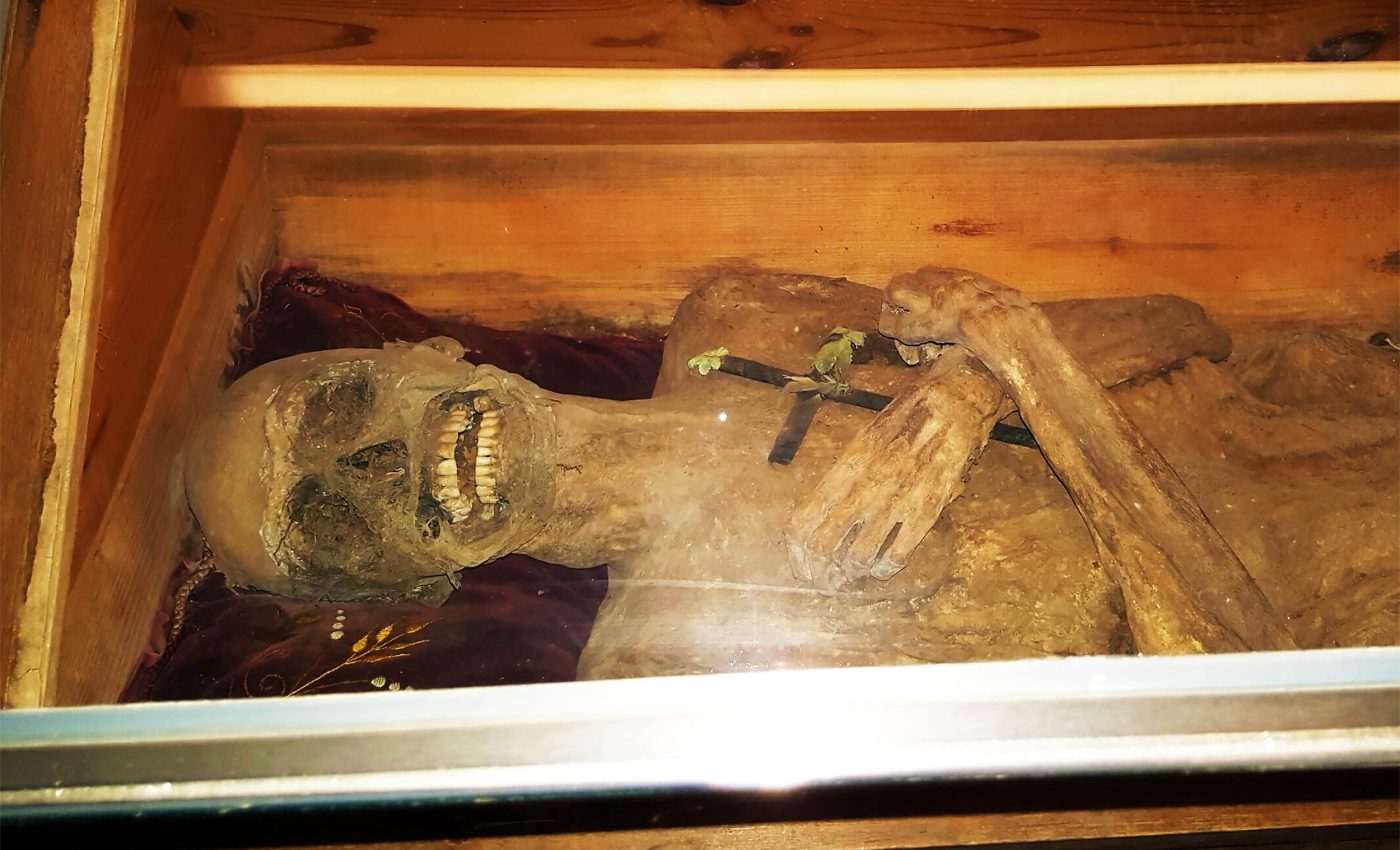
Unknown embalming technique discovered in very well-preserved mummy
Centuries ago, embalming traditions varied from place to place. In some cultures, bodies of the deceased were carefully prepared for spiritual reasons, while in others they were simply buried where they passed.
A surprising discovery in a small Austrian village has sparked a renewed fascination with these practices. The research was led by Dr. Andreas Nerlich, a pathologist at Ludwig-Maximilians-Universität and first author on a publication about the find.
His team studied a mummy believed to be the body of a priest who died in 1746.
Identifying the Austrian mummy
Analyses suggested the mummified body was that of a local parish vicar named Franz Xaver Sidler von Rosenegg. Experts used radiocarbon dating to pin down a likely mid-18th century timeframe for his death.
Stable isotope evaluations shed light on his eating patterns, and revealed that he enjoyed better ood resources than an average laborer of his time. Further tests found no signs of heavy or rough manual work in his skeleton.
The overall condition of his trunk astounded many who viewed it. Researchers confirmed that the man’s face and lower limbs were not as well preserved, but his torso and vital internal areas were in unexpectedly good shape.
How a priest’s body was embalmed for centuries
”Our investigation uncovered that the excellent preservation status came from an unusual type of embalming, achieved by stuffing the abdomen through the rectal canal with wood chips, twigs and fabric, and the addition of zinc chloride for internal drying, ”said Dr. Nerlich.
Radiological scans confirmed that his torso was filled with foreign materials. The body walls had not been opened in the usual fashion, which made the investigation more challenging.
It took modern tools like CT imaging to unravel exactly how far these packing techniques extended inside.
Possible cause of death
Experts detected signs that the vicar may have had tuberculosis. The condition was suggested by calcifications in the right lung and patterns seen on the radiographs.
In earlier centuries, severe lung infections often proved fatal, especially when no advanced treatments existed.

Historical records from the era note that conflicts like the War of the Austrian Succession sometimes led to food shortages and stress.
Such hardships might have worsened health problems toward the end of his life. Isotope signals hinted at possible nutritional strain as his final months progressed.
Mysterious glass bead found
Researchers found a glass sphere with tiny holes resting in the pelvis.
Some wondered if it had anything to do with a ritual or special rite. The small orb might have been part of a church adornment or garment that slipped inside. No other decorative beads were discovered in the body cavity.
Toxicological tests indicated high levels of zinc. Experts concluded that zinc chloride helped dry out internal tissues, allowing them to remain remarkably stable over hundreds of years.
Embalming story of the vicar
The well-preserved trunk showed no major signs of external tampering.
Specialists saw no incision across the chest or abdomen. Instead, it appears the embalming materials were inserted from below, which is rarely documented in European contexts.
Local writings had long whispered about the identity of this vicar, although nobody could prove it until now. For many years, the mummy drew the curious who wanted to see its surprisingly intact skin and ribcage.
Scientific methods have finally solved the mystery of how it stayed in such a stable condition.
Reflections on embalming practices
In many regions, the word embalming brings to mind elaborate procedures known from places like ancient Egypt.
Yet Europe had its own diverse methods, some of which faded from memory once more modern burial standards took hold.

Specialists suspect that other examples may exist, though they remain concealed in closed crypts or have disintegrated from natural processes.
This mummy’s case stands out due to its treatment with a combination of simple items and a well-chosen drying agent.
With the trunk effectively sealed and its interior thoroughly dried, even centuries later it has not collapsed. The face and legs, which did not receive the same care, decayed more quickly.
Insights for future study
Researchers now wonder if there are other mummified clergy or aristocrats tucked away in hidden vaults. Many remains have not been examined with current technology, so older embalmers’ tricks might have gone unnoticed.
As knowledge spreads, archaeologists and pathologists could have a better chance of spotting the subtle signs.
While some might find the practice unsettling, it also provides a window into historical beliefs. People in the past often worried about harmful vapors, or miasma, from decaying bodies.
Methods like these might have been a practical way to ensure a safer environment for mourners.
Why this embalming method preserved the body
Evidence suggests that the vicar was deliberately prepared for reasons tied to cultural customs of his time. This single case reveals that not all European mummies were created by happenstance.
Careful internal treatment, coupled with the region’s climate, preserved the dead man’s form to a striking degree.
His story shines a light on local history and gives clues to a simple but effective embalming option. Although it was never widely recorded in textbooks, the approach in this Austrian crypt still defies decay after nearly three centuries.
The study is published in Frontiers in Medicine.
—–
Like what you read? Subscribe to our newsletter for engaging articles, exclusive content, and the latest updates.
Check us out on EarthSnap, a free app brought to you by Eric Ralls and Earth.com.
—–













